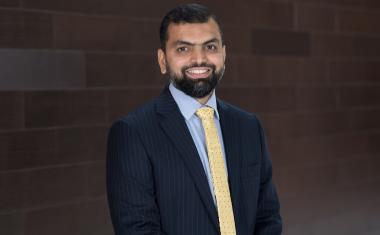Pierre Racz Part 2: "Working on IA not on AI!"
In part two of this three-part interview series with Pierre Racz, President of Genetec, he is telling us about how they are matching machine learning and the human factor to solve crime. Very good engineering and understanding the limits of video analytics is a key factor in customer success.

What are your thoughts on video analytics?
Pierre Racz: Video analytics is a useful tool, but unrealistic promises around analytics have led to operational disappointment. I am not saying that there are no benefits to video analytics. I am saying that you need to know the limitations and be open and honest about the limits. Ignoring the limitations will lead to disappointment. For example, in a relatively simple application like license plate recognition, if you do it wrong or if you expect accuracy close to 100 %, you will be disappointed. In other applications, bad engineering can lead to a lot of false positives and false negatives and a false sense of security. My advice is to operate the technology within its limits and make contingency plans for when the technology fails.
What is your approach to video analytics?
Pierre Racz: First of all, before you start, you have to use the scientific method. Ask the customer, what is the business outcome they are trying to achieve. And then you write down all the criteria for a successful operation. For example, I want to do people counting, and I need an accuracy of 90 %. Then you think about the error rates and what the impact of those error rates on the downstream business is. Then we can run the experiment and see if it‘s successful. If you engineered the conditions properly, you can achieve the business outcome, but most of the time, it‘s improperly engineered, and you don‘t get the anticipated business outcome.
What is your strategy when it comes to analytics tools? Are you developing your own analytics tools for your solutions?
Pierre Racz: Yes, we have about 30 PhDs working in our R&D teams. One of the groups is located in London and another one is in Vienna. They are working on machine vision and machine learning that are subsets of what others refer to as artificial intelligence. Their engineering is targeted to reduce false positive and false negative rates for our customer applications. So, for example, one of our groups is working on license plate reading cameras and another on semantic processing. I would say they are working on IA, intelligent automation, not on AI.
And what does intelligent automation mean?
Pierre Racz: You have the human supply, the creativity, and the intuition, and you have the machine do the heavy lifting, and you close the loop like that. But it‘s the human that drives it.
We have a group in England, and they are working with a tool for visual analyst analytics for sense making in crime. The analyst has a canvas and every time there are crimes, it creates a crime card, which is like a record of the crime. Then, they can put the crime cards on the screen and, just by sliding them together, the computer will compute all kinds of correlations with them, like time correlations and word correlations. Then the system tells the human what correlations were found. The next step is that a human is driving it. They can see how things correlate and they can slide the cards around. They can do that and connect the system over an interface to around 200 different databases. It‘s all done by the machine in the background and the crime analyst doesn‘t have to be trained on computers. They have to be trained in human psychology.
You mentioned the business outcome as the criteria for a successful operation of AI/IA. Can you disclose results for that system?
Pierre Racz: With our help, two cases were solved that I know of. One was in England. I‘m not allowed to tell you where. The description of the first crime was, ‘break-in through the back door’. A messy search started and via the words that the officers had written in their report, we found the correlation and we made a geographic search for all of those events that occurred in a certain area and then noticed that the break-ins were happening Tuesday, Wednesday and Thursday of the week. And then, I think in June or July, the crimes stopped for two months and then started up again. So, the analyst made a hypothesis: They didn’t think the perpetrator went on vacation, but that maybe he went to prison. Then they did a search in another database that had the information who went into prison around the time the crimes stopped, and who came out of prison. They found two people. One of them was the guy. All in all, it was a human who solved the case. It wasn‘t the machine.
We also helped in an unsolved murder in a major city where we leveraged the PD’s crime database. One of our PhDs was doing a demo using that database. They realized what happened: One person got into a car accident with a gang member, and three days later another gang member killed the person who caused the accident. The police were able to find them. It was the tool that helped them to see. That‘s a good use of machine learning. But the human is the driver.
Do you integrate video analytics from other vendors like you do with video streams?
Pierre Racz: As I said, we are working on our own systems, but of course we integrate with a lot of other products out there. There is a change in the industry. At the beginning there was a lot of wishful thinking and many companies that started to do analytics quickly found out that there was no money to be made in there, because they wouldn’t make it past proof of concepts. Too many false positives and false negatives kill the business case. So, what we do is that we will use those tools, but only in situations where we can control the quality. They‘re useful tools. I‘m not saying they‘re not useful, but you mustn‘t have this magical thinking. You have to do good engineering.
Special Interview Series with Pierre Racz, President and CEO at Genetec
- Part 1 Pierre Racz: "Real Artificial Intelligence Does Not Exist"
- Part 2 Pierre Racz:"Working on IA not on AI!"
- Part 3 Pierre Racz:"Unsafe Computer Networks are an Annoyance for the Whole Industry"
This is an article of our jubilee issue. Click on the button to find all of the interviews and the e-paper.














